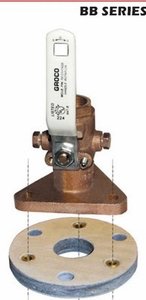Pack Mule
TF Site Team
- Joined
- Jan 24, 2013
- Messages
- 3,749
- Location
- USA
- Vessel Name
- Slo-Poke
- Vessel Make
- Jorgensen custom 44
I'm planning on bottom job this year and would also like to replace thru hulls and seacocks . Has anyone done this latley? What would be a good round $ to use for 3/4" and 1-1/2" having the yard do it . I know the price could be all over the place . I would like to use bronze and also have a backing plate . I would do the job myself but I don't think the yard I'm using for bottom job will let me . I did mine on sailboat many years ago but the boat was in the back yard . Just looking for $ number for budget right now .













